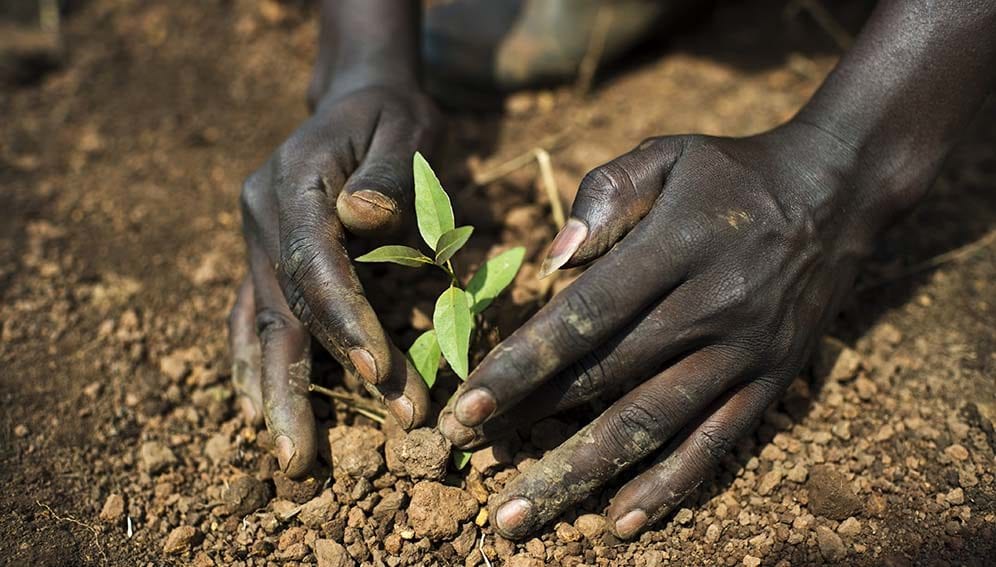By: Aisling Irwin
Send to a friend
The details you provide on this page will not be used to send unsolicited email, and will not be sold to a 3rd party. See privacy policy.
Forest experts need to interact more with farming and mining businesses, agriculture and finance ministries in order to accelerate the use of scientific tools to restore global forests.
It’s one of a series of recommendations published this month (16 March) on how to achieve SDG 15 to manage forests in a sustainable way.
At least 3.3 million hectares of forest are lost each year, leading to increased carbon emissions and lost ecosystem services, and affecting the livelihoods of 1.6 billion people who depend on forests.
The problem is that new scientific findings — and political messages — tend to stay within forest ministries, NGOs and research organisations, according to speakers at a meeting of the Collaborative Partnership on Forests, an informal grouping of 14 international organisations which convened in Rome, Italy, last month (20-22 February) and is behind the recommendations.
“Foresters need to get out of the forest,” said Avery Cohn, a professor of environment and resource policy at Tufts University in the United States, at the meeting.
We’re going to get a much clearer picture of what’s being done to mitigate forest destruction and degradation.
Erik Lindquist
For example, there is unprecedented access to increasingly detailed remote-sensing data — and this data, coupled with evidence-based research, needs wider dissemination, the event heard.
Christiana Figueres, former executive secretary of the UN Framework Convention on Climate Change, told the meeting that the wider world needs to be reminded of the vast capability of forests to absorb carbon.
“We have forgotten that the forest sector — that land use — is 30 per cent of the solution … we have the best machine of negative emissions that we could ever have produced,” she said.
Cohn pointed out that many initiatives are working well. “What we need is to figure out how to scale up those promising bits and pieces,” he said. “An important role for science is to ask what’s working and what’s not and why.”
Cohn highlighted a randomised controlled trial, published last year in Science magazine, which used satellite imagery to show that paying farmers to abstain from logging had been successful in Uganda. Another study used satellite-measured tree cover loss to find that pledges by corporations to buy only sustainable palm oil modestly reduced deforestation.
He added that scientists needed to extend so-called natural capital accounting systems — which put a price on the benefits we get from forests such as cooling — by proactively reaching out to individual businesses so they use those figures in their operations.
By putting a monetary value to gains expected from climate regulation services, such an approach “can eventually add a new line to the cost-benefit analysis that an agribusiness does”, he said.
The Food and Agriculture Organization (FAO) and Norway-run project, SEPAL (System for Earth Observation Data Access, Processing and Analysis for Land Monitoring), has brought the capacity for instant land cover analysis to over 60 countries by shifting data storage and processing to cloud-based systems.“For many people, it’s the first time they can quickly produce an image of their territory,” Erik Lindquist, forestry officer with the FAO, told the event. “We’re going to get a much clearer picture of what’s being done to mitigate forest destruction and degradation.”
Cheap drones are making it easier for developing countries to do rapid ground assessments and sidestep expensive laser-based forest analysis such as LIDAR.
Argentinian scientist Diego Mohr Bell described a system he is developing with Gastón Díaz, both of the Forestry Research and Extension Centre CIEFAP, to use an unmanned aerial vehicle with off-the-shelf cameras to photograph inaccessible terrain, which their software then processes into three-dimensional maps.
Scientists need to do more to disseminate successful practices and technologies such as these, combining their expertise with that of other fields, and working more closely with policymakers and the private sector, the report says.


